Knowing the Land, Knowing the Hag
Rain-rain-rain, an experiment in weaving wonder, the liminal spaces between seasons-a photo essay, a culture of gifting, elderberry recipe, citizenship, tying myself in knots, and more...
Rain, Rain, Go Away!
It has been the strangest summer. According to Met Eirreann, Ireland’s meteorological body, we have had the wettest summer since records began. In Ireland, we received 217% of our long term average of rainfall; here in Cavan, that worked out at 210%. We’re used to rain, it’s why we have so many lakes. But it rained heavily every day in July, and although we’ve had the occasional dry and - dare I say it - sunny day since, it hasn’t changed much. I look at the waterlogged ground and low grey skies and think how much more can the land take? And yet it does, absorbing the excess and spiriting it away deep beneath our feet in folds and seams and cracks in the rock, and pouring it safely into rivers and lakes.
Meanwhile, the air we breathe is perpetually damp, and for the first time ever in all my years of living here, I notice the trails of damp on some of the walls in our home, as the wetness of clothes and towels and shoes lingers. Even with windows open, the damp creeps in and makes its presence felt. I am grateful for the abundance of water when in other parts of the world the land is burning. But the constant grey and wet seeped into my bones and brain over the summer, turning me into an island that was sealed off and unreachable for much of it. It has been hard to pull myself free, and to be honest, I’m still not quite there yet. But I’m working on it.
An Experiment in Weaving Wonder
This is what I have drying on my kitchen windowsill this morning. From the left: meadowsweet seeds, bay willow leaves (because they are meant to be quite aromatic and often used in pot pourris), leaves from my dragon tree, meadowsweet flowers macerating in sunflower oil, crocosmia seeds, ribwort plantain leaves, crocosmia leaves, and ribwort plantain stems. All of this, except the dragon tree leaves, has been foraged from nature’s larder in my local area, where crocosmia, which is not native to Ireland, has become naturalised. My interest here is not medicinal, or nutritional; I am experimenting in how I can best feed my newly-fledged weaving addiction. I know where these plants are located, so I can gather more if initial attempts prove successful.
I also intend to experiment with other foraged plants: in my garden, I have lots of grey willow, much of which is not supple for weaving, but some of it is, and will at least provide bark for weaving in the spring, and branches for uprights. I also have a lot of dogwood in my garden. Locally, there is an abundance of snowberry, which is invasive here; its reddish-brown branches are long and narrow and straight, and promise good weaving potential. Billard’s Bridewort (Spiraea x billardii) is another naturalised plant in my locality that I suspect may offer good weaving. I also intend to harvest some sycamore and hazel suckers, which will provide sturdy rods for uprights. I’m so excited to begin this weaving experiment this winter, that I am impatient for the leaves to fall! This is such a reversal for me. But I won’t harvest any branches until leaves and seeds have been dispersed. And I’ll keep you posted as my research progresses.
The Liminal Spaces between Seasons - A Photo Essay
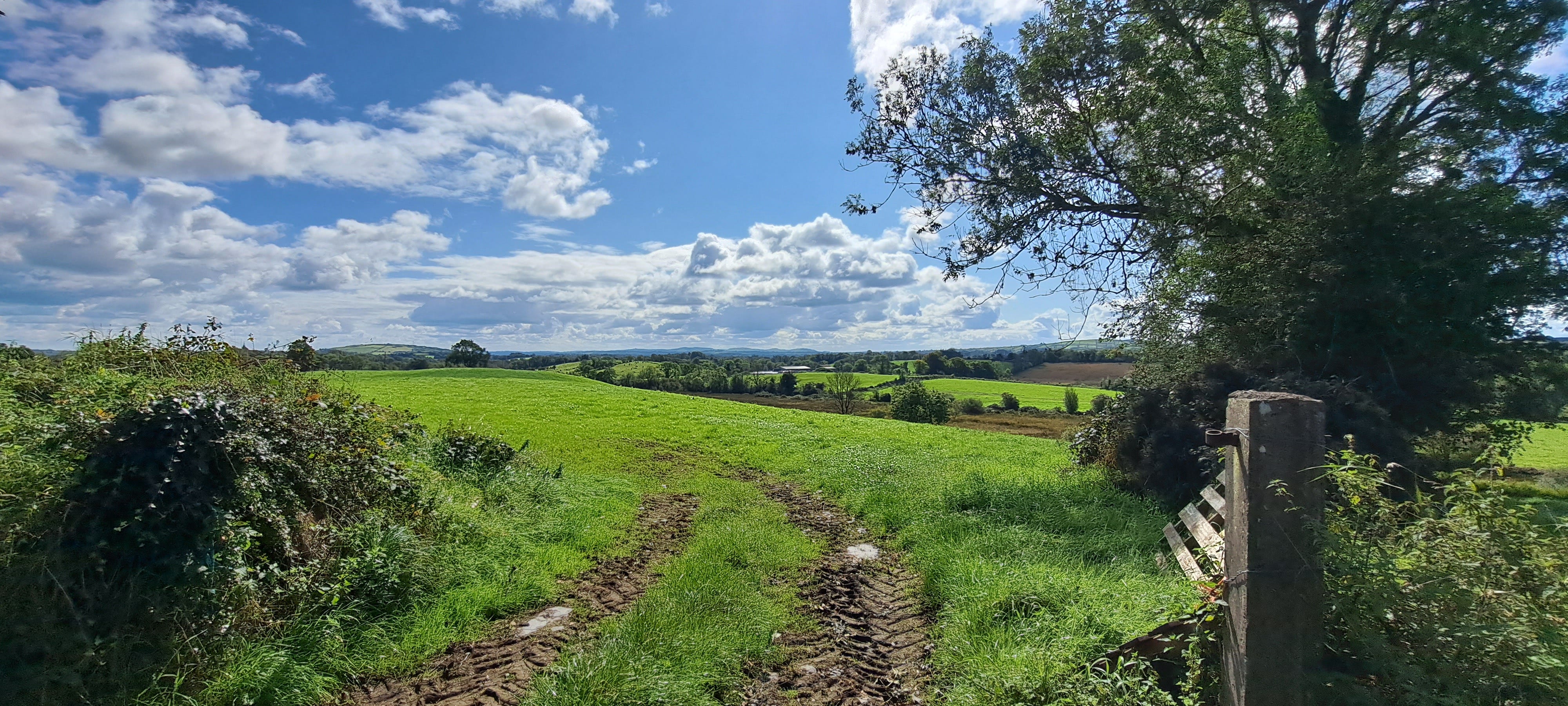
On Tuesday, there was blue sky, so I headed out for a walk. I didn’t take my usual route, for some reason. There are hills, this way. I think I needed to be high up, to be close to that clear blue. After a kilometre or so, I crested the first hill; from there I could see Loughcrew. And the sun was warm.

I passed the egg machine, and made a mental note to get some on the way back. It was very quiet, and surprisingly warm. Was this the tail end of summer, or the beginnings of autumn? The berry-laden hawthorn hedges told me summer was well past. But the noon-day drowsy heat drove the fog from my mind and the damp from my bones and insisted summer was not over.
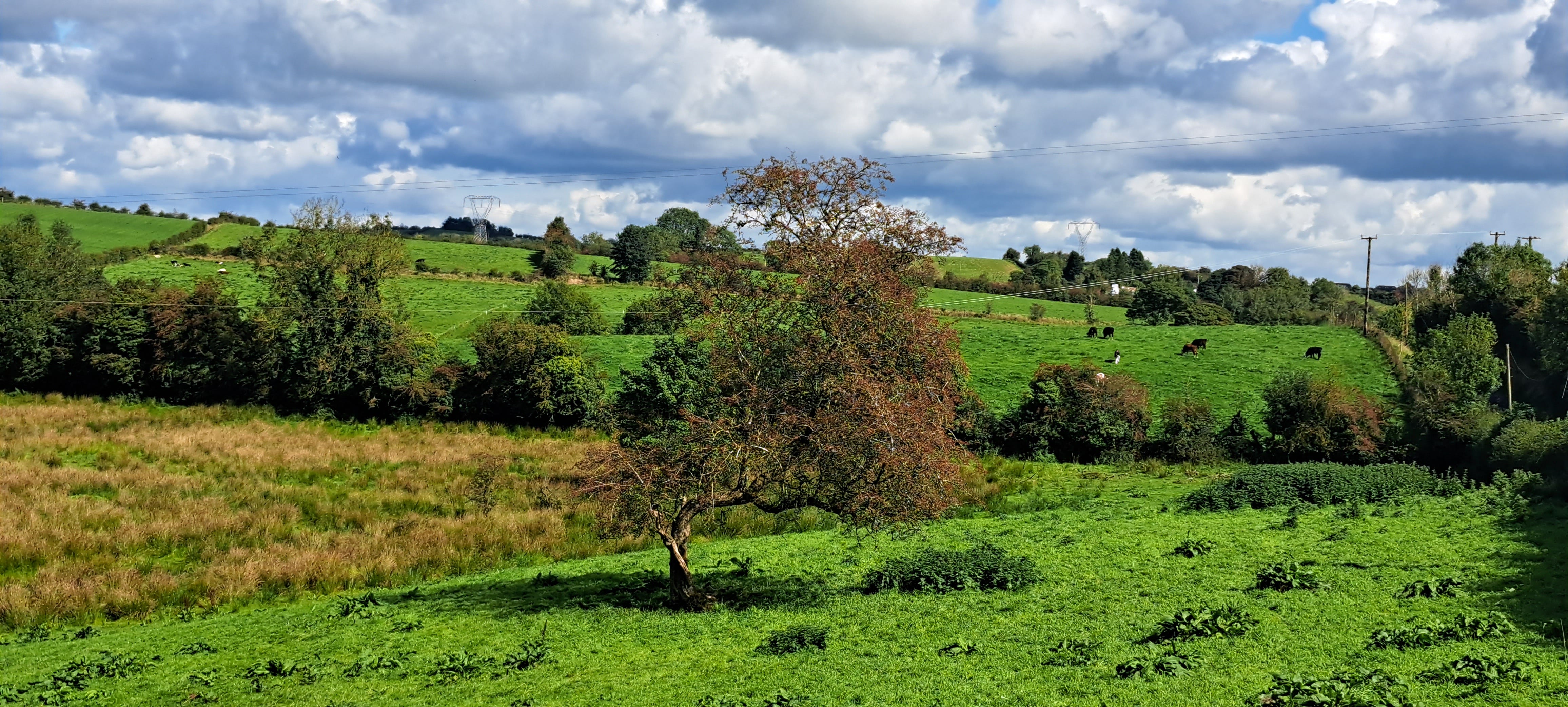
I have admired this fairy tree for years. She is old, her gnarly wrinkled trunk and stooped posture evidence of that. But still, every year she bears her abundant fruit, a gift to those who have need of it. She is, I think, a living embodiment of the Cailleach. She knows, even if we don’t, that there are spaces between the seasons which we sometimes fall into. Her leaves are starting to fall, but not her fruitfulness.
I was delighted to find a patch of yarrow growing on a banking. I’ve never seen it elsewhere in my locality. Used historically to stanch wounds and bleeding, and also for divination purposes, it was a real treat to behold. I observed this bee busily collecting the gift of pollen, totally oblivious to my presence, and thought that summer is definitely not yet over. In fact, I was astonished at the diversity of plants still in flower.
The hedges are smothered in Ivy at the moment, which is coming into flower, and it was thronged with bees and butterflies, mostly Red Admirals. In fact, as I walked past one hedge, the buzzing was so loud I thought the bees were swarming, and I was instantly transported back to my childhood when I passed a swarm and ended up with three bees entangled in my hair; my mother combed them out and luckily, neither of us were stung. I did not realise how otherworldly ivy flowers are until I took a closer look.



Everywhere I looked, plant beings were supporting other creatures with their pollen and fruit, both participants in what Robin Wall Kimmerer calls a gift relationship; in return, these creatures pollinate other plants, or poop seeds in different areas away from the parent plant, spreading diversity and ensuring the plant’s genetic and fecund success. This gift exchange benefits both parties. I had read about this, and now here I was, seeing it very much in action in the natural world around me, the natural order of things.

I encountered many other plants flowering still: field buttercups, fiery montbretia, ribwort plantain, cranesbill, broad-leafed willowherb, hedge false bindweed with its white trumpet-like blooms, marsh woundwort, purple-pink cow-vetch, and the prolific starry herb robert. Summer, for that day, anyway, was far from over.
A Culture of Gifting
The land gives and gives. It does not demand anything in return, but the natural world is programmed to honour its gifts in an unconscious virtuous circle of reciprocity. I had read about this in Robin Wall Kimmerer’s Braiding Sweetgrass for one of my modules for my Masters. I guess it was a cycle I was always vaguely aware of, but had just accepted and never thought much about. On my walk this week, I saw it blatantly in action all around me, a last burst of late-summer offerings from various plant beings to the animals and insects that joyfully and busily availed of them. Although the day was warm and quiet and unhurried, there was a blaze of activity in the verges at my feet and in the hedges I walked between.
In Ireland, the gift economy was the way of things between people, too, well up until the sixteenth century, when the English planted their common law, market economy and land ownership. As my history lecturer explained as an example, a chieftain would gift his men with feasting and valuable tokens of appreciation, and in return the men would give their loyalty and service. There was no land ownership as we know it today, and the Brehon laws ensured order. * Ordinary people would barter goods, the wise-woman was ‘paid’ for her healing by the giving of gifts, never money, in a system which probably arose long before currency came into existence, and which persisted despite it in later times.
In Ireland, I encountered this personally. As I was drawn into circles in which people chose to live closer to the land and the old ways, I would often find small gifts pressed into my hands by people who welcomed me and whom I had only just met. These objects were handmade, spoke of time and skill and care as they were crafted into being, and yet were given away freely with no expectation of a return. And although nothing was expected of me, I began to feel embarrassment and shame; I had no skills, I did not know how to craft anything other than words, and then, not the spoken word of the storyteller, which could happily be exchanged and received by others. This generosity was one-sided, and that did not feel right to me.
It was an unconscious prompting which nudged me gently onto the path I have now taken. In getting to know the Cailleach, I am learning to know the land, and the systems which generate from, and renew, it. I handled willow, and the desire to weave was borne in me. I walked the land, saw the flowers, and the desire to learn their names and uses was borne in me. My hands were itching to move in ways that were unfamiliar to me, to craft things that are useful and beautiful from the abundant offerings the land is laying before me. I see the reciprocity in that: the willow lives forever in the basket that is made and gifted and will outlive the maker and their offspring. The willow responds to coppicing, regenerating enthusiastically and energetically. Perhaps it feels freed, like I do when the weight of my hair is cut away at regular intervals throughout the year. I take cuttings which put out tiny frail white tendrils which root themselves in the earth; I harvest seeds from wild plants and spread them in my wild garden, where nature is free to do as she wills, and where this year I have been rewarded with wild abundance. My giving in return may be small, but it comes from the heart.
The gift economy is a beautiful, natural, effective and nourishing model for living that I hope one day we may all benefit from in this calamitous late capitalist world.
* This is not to say that life and society was perfect; laws are aspirational of how we would like to live, and exist because some people disrespect that, thus requiring punishment, or laws that act as deterrent. Historically, life in Ireland was as imperfect as it was in any other civilisation.
Elderberry Recipe
This is not so much a recipe, as an adventure. I remember the first time I encountered elderberries; it was at the monastic site of Fore. Someone had already picked a bunch and then discarded it. They were very ripe, the stem almost as purple as the berries, the juices oozing freely. I had no idea at the time as to what it was, certainly I did not anticipate it was something that could be eaten by humans.
In June, though, I ate elderflowers in the woods, fried in batter on an open fire, and they were delicious. I was disappointed to find only one elder tree in my locality, and another in someone’s garden, so that was out of bounds. I managed to forage a handful from the wild tree, and carefully brought them home. Not enough to make syrup with, although my friend who lives at Loughcrew has made bottles full! I’m not fond of sweet sugary drinks though, but I thought I had enough to make a small sample of elderberry flavoured gin.
I used a fork to remove the berries from the stalks, and then put them in the fridge to ripen for 10 days. I then weighed them and put them in a jar with a slice of lemon and a dribble of lemon juice. I topped it up with double its weight in gin. Immediately, the gin began to change colour. I will swirl it every day for the next month, watching its colour develop. After a month, I will make a syrup with water and brown erythritol (not sugar, erythritol is a natural sugar replacement that is kind to teeth), but I will not make a very sweet one. I will mix this with the elderberry gin, and then top with tonic, although it can be drunk neat, if preferred. I’ll let you know how it turns out.
Citizenship
On the coming 2nd of October, I will pledge my allegiance to this nation in a ceremony in Dublin and be adopted as a daughter of Ireland. My application for Irish citizenship has taken three years, delayed by a pandemic and a war. I have lived in Ireland for over twenty years. I am married to an Irish man. I have birthed three Irish children. I feel like I belong in this land more than any place else, but I am very aware that I will be legally Irish, never truly Irish. I am grateful for being accepted and welcomed here. But it is an ache I bear that I don’t truly belong anywhere, something I feel in my bones every day. I am planted, I have put down roots, but they are as yet shallow. My awareness of my difference has, I think, over time become a barrier between myself and other groups that I can’t break through, a protection and a weakness, the result of an itinerant beginning and disturbed heritage, perhaps. I can learn this land’s history, its language, its culture, but that doesn’t make me a part of it. My sons, however, very much are, and I am eternally grateful for that.
Tying Myself in Knots
I have taken up macrame, and find it immensely therapeutic. I am new to this, and making lots of mistakes, but it is incredible how the mere twisting of fibres into knots can make items so functional and so beautiful. The real beauty is, anyone can do it. I ordered some macrame cord to learn with, as it is very soft and pliable, perfect for hands that begin as awkward and immobile. It does not satisfy me though; its too neat, too manufactured, even though I chose cord made from organic cotton.
When I practice macrame, it soothes me. It takes me into another dimension in which my child self watches my mother in her kaftan, standing in the shade of the veranda, warbling canary singing at her side, as she knots plant hanger after plant hanger, wall hanging after wall hanging, weaving in the foraged flotsam and jetsam of our daily walks as she went.
I don’t know what she did with all these masterpieces; gave them away, I suppose, although she did keep some to decorate our home. I have one myself, hanging in an alcove in my living room. It dates back to the 1970s, and is becoming slightly unravelled and frayed in places. I studied its knots yesterday, and it taught me something none of the youtube videos I have watched did… my mother, now locked in a body made almost immobile and who struggles to speak, still teaching me through the handiwork she created nearly fifty years ago.

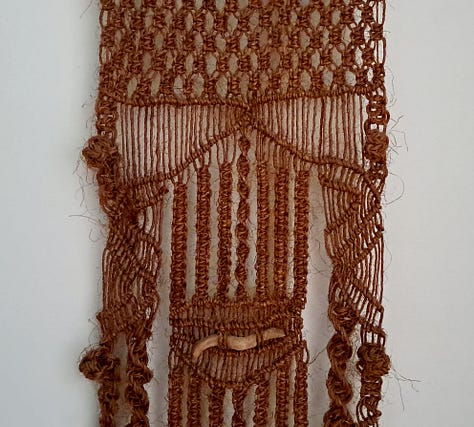

I never thought then that one day I would carry her torch. I will visit her soon, and I will gift her a macrame I have made for her, using the very knots she doesn’t know she has taught me. I wonder if it will spark a memory in her, a yearning perhaps to resume something which so consumed her in her youth.
Next weekend, I will be joining my friend, Jenni in Loughrea for two days of basket weaving at The Common Knowledge School of Lost Skills. I can’t wait to see Jenni, and I can’t wait to weave some willow again! I'll share the adventure with you soon.
It is also the autumn equinox on Saturday 23rd September; I won’t be able to visit Loughcrew, but hopefully Jenni and I can witness the sunrise somewhere near Loughrea.
I will open our thread this Friday 22nd September, so keep an eye out for it. If you have a question for me, or a hot topic you’d like to discuss, perhaps in relation to September’s post on sheelanagigs, or on my journey with the Cailleach, or anything really, hit the reply arrow at the top of this email, and I will include it as part of the Thread.
Chat to you then!
Beanachtaí, Alí xxx





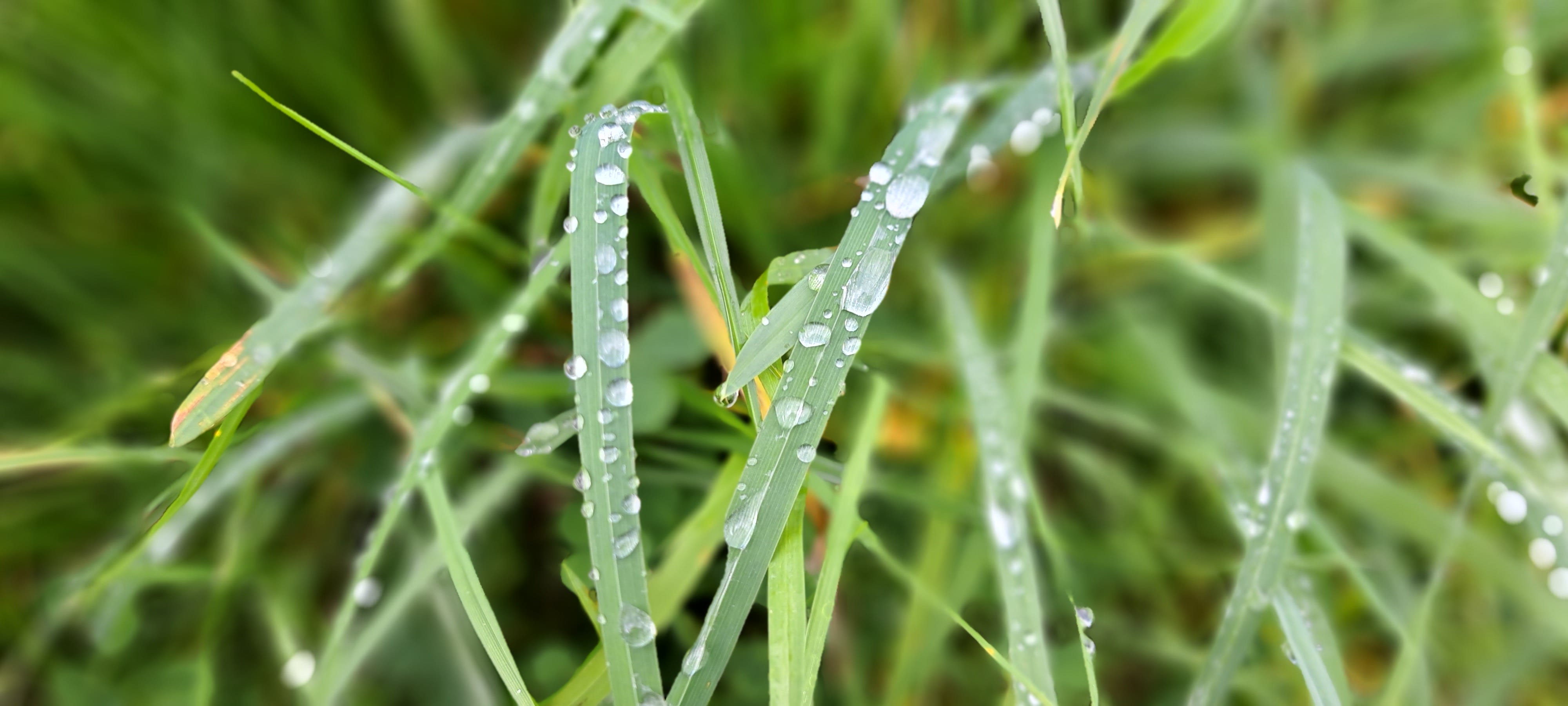




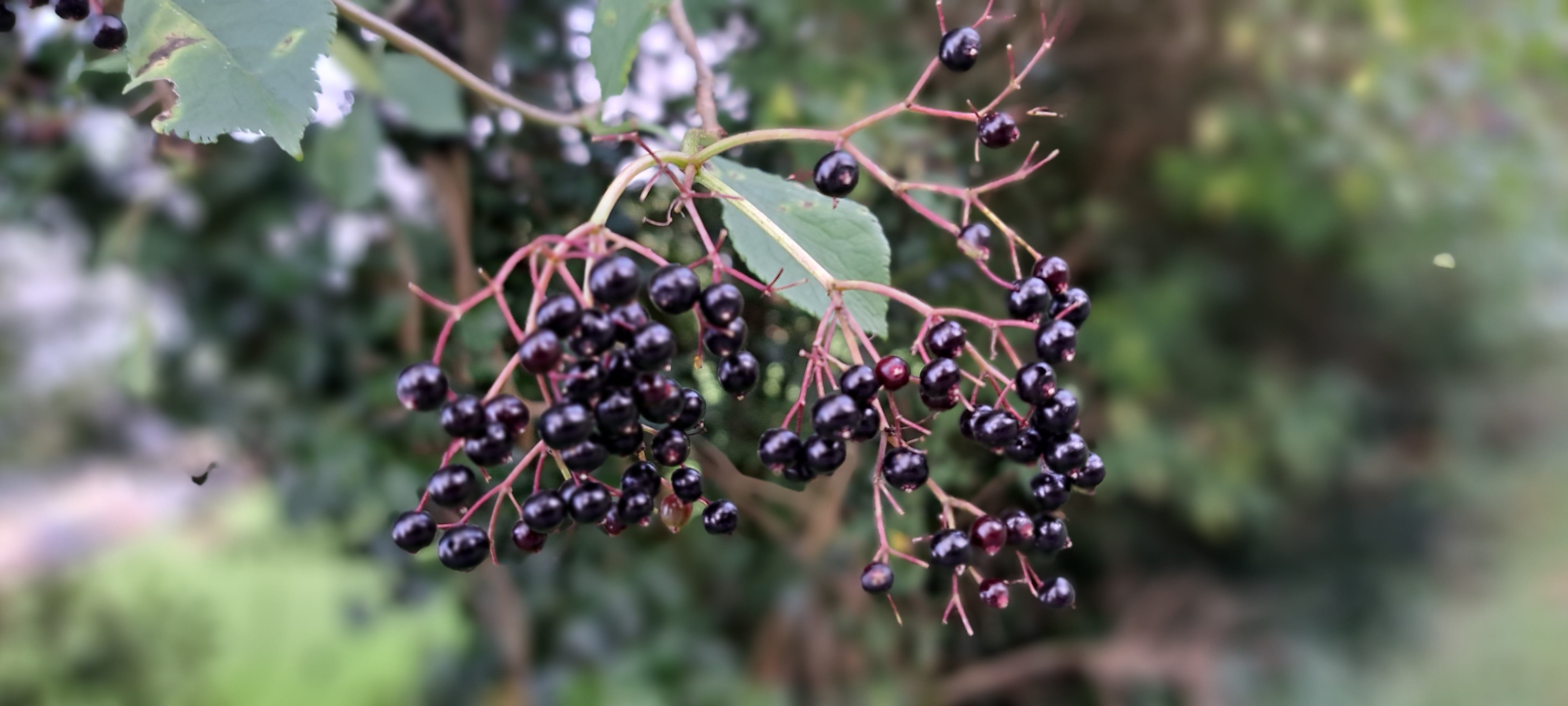
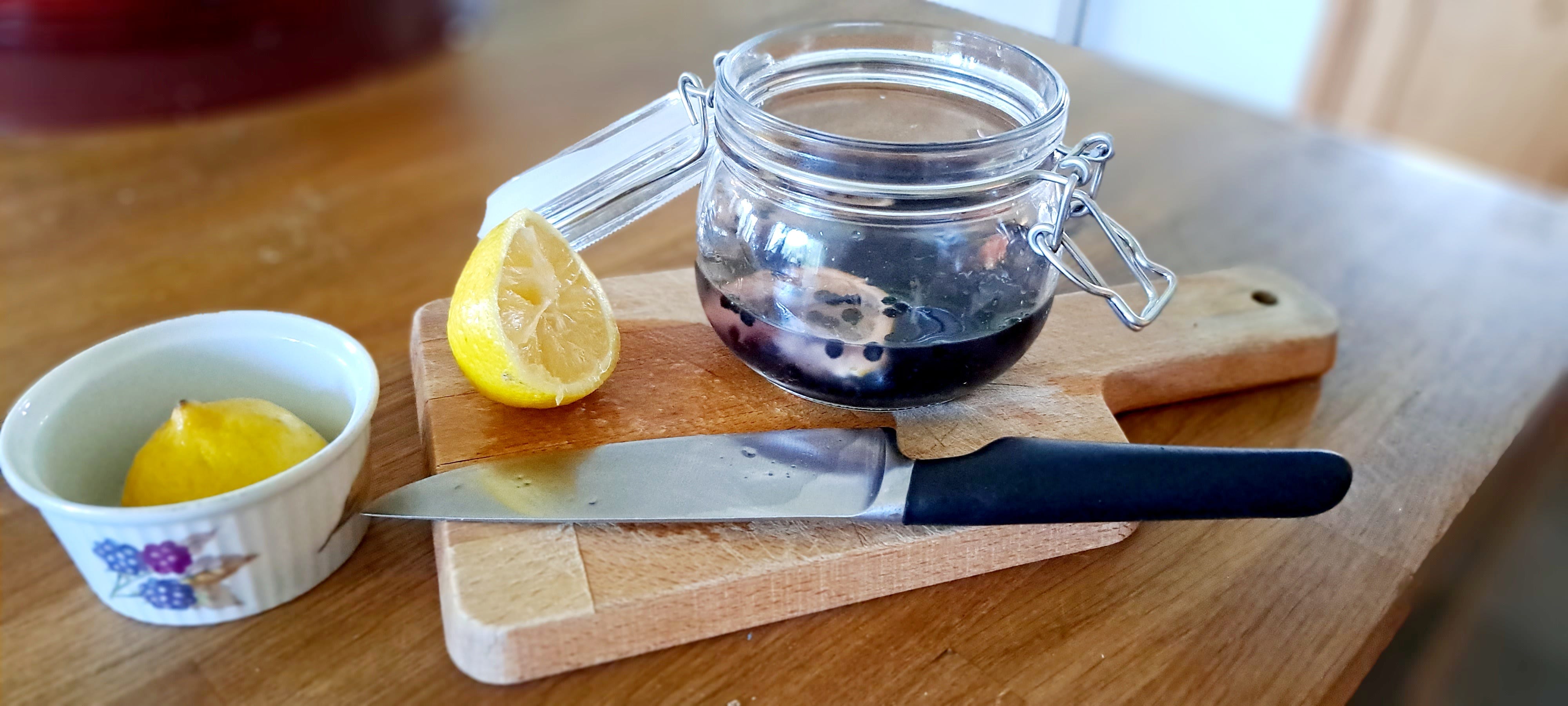

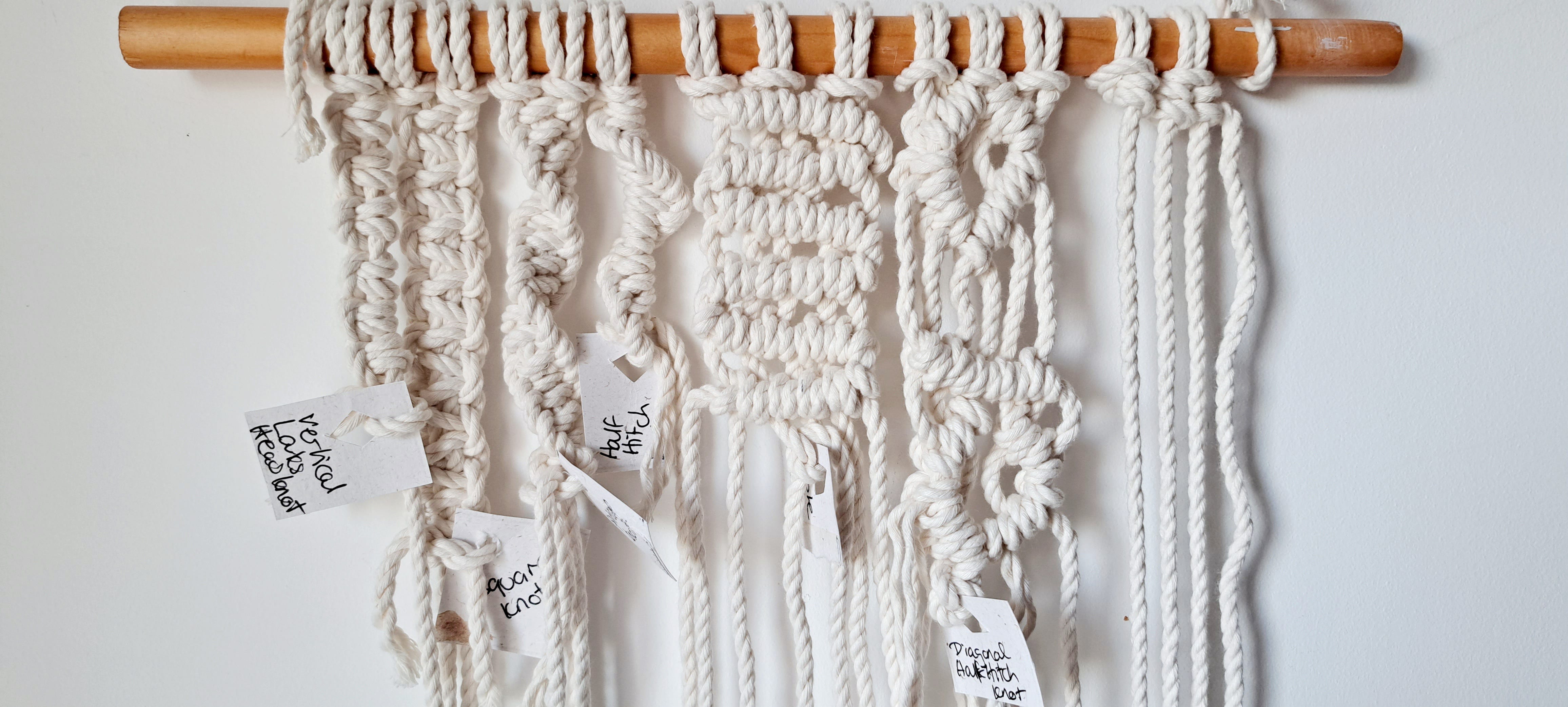
Miigwich, Alí for sharing your observations and what you are (re)learning. I understand what it is to feel rootless or shallowly planted, in a place with deep traditions of the land, sky, and water. But you are a bridge for others drawn to rekindle connects as we all become migrant at some point. So, a hearty congrats to your official Citizenship and your itches to work with your hands. Reciprocity comes about in surprising and beautiful ways.
Yea! on your citizenship. Happy Dance!